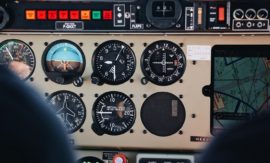Intended learning outcomes: Explain order picking, packaging, load building, and transportation to receiver.
Distribution, or distribution control, comprises the tasks involved in distributing (moving) finished goods from the manufacturer to the customer.
The shipping department readies finished products for delivery according to sales orders transmitted in the form of delivery proposals by sales and distribution handling. Where appropriate, sales and distribution handling monitors production or procurement orders and transfers finished goods or received incoming goods directly to the shipping department.
The sales orders are readied for shipment according to delivery notes.[note 1512] They are handled in sequence or grouped together for one-time picking, mainly depending on the confirmed delivery date. Determination of delivery dates depends to a significant extent on the available distribution system. Decisions on the type of distribution network are made in the context of facilities location planning.
Warehousing describes the activities related to receiving, storing, and shipping materials to and from production or distribution locations ([ASCM22]).
The distribution network structure (see Figure 3.1.3.1) determines the shipping distances for delivery of orders and the likely means of transportation for delivery. Although operations planning of shipments will take place later on (see Section 15.4.3), it is important to take operations into account as early as delivery confirmation, for it will affect the delivery date. Depending on the means of transportation, delivery dates are not arbitrary, for deliveries are grouped together, or collated, in delivery “tours” that are usually served cyclically.
Flexible distribution control is capable of monitoring customer orders, or the confirmed delivery dates of individual positions on orders, by continuous checks on the progress of production and procurement orders. This is similar to the “freight train” of customer order processing described in Section 1.3.3, which halts at particular stations to monitor the supply of goods and information from other trains. Changes in production or procurement completion dates require adjustments of the planned transports.
The actual shipping process encompasses order picking, packaging, assembling the shipment, and transport to the receiver. This is accompanied by administrative activities, such as preparation of supporting documents and packing slips; maintaining transport statistics; complaints about handling of hauling (damage) claims, and much more.
Course section 15.4: Subsections and their intended learning outcomes

15.4 Distribution Control
Intended learning outcomes: Explain order picking, packaging, load building, and transportation to receiver.

15.4.1 Order Picking
Intended learning outcomes: Explain discrete order picking and batch picking. Describe sequential picking and zone picking. Differentiate between decentralized goods preparation and centralized goods preparation.

15.4.2 Packaging
Intended learning outcomes: Present a conceptual framework to handle the diverse functions and requirements of packaging.

15.4.2b Load Building
Intended learning outcomes: Explain load building. Identify the levels of aggregation in load building.

15.4.3 Transportation to Receiver
Intended learning outcomes: Describe the selection of the mode of transport. Explain the transport chain from supplier to receiver and various kinds of organizing transshipment points.

15.4.3b Transport Routing and Scheduling
Intended learning outcomes: Present routing and scheduling and the optimization of loading space.
Course 15: Sections and their intended learning outcomes

Course 15 – Order Release and Control
Intended learning outcomes: Differentiate various techniques for order release. Explain in detail shop floor control. Present methods and techniques used for order monitoring and shop floor data collection. Describe distribution control.

15.1 Order Release
Intended learning outcomes: Describe order proposals for production and procurement as well as order release. Explain load-oriented order release (Loor) and capacity-oriented materials management (Corma).

15.2 Shop Floor Control — Production Activity Control (PAC) — Manufacturing Execution System (MES)
Intended learning outcomes: Describe the issuance of accompanying documents for production. Explain operations scheduling, dispatching, and finite forward scheduling. Present sequencing methods.

15.3 Order Monitoring and Shop Floor Data Collection
Intended learning outcomes: Describe recording issues of goods from stock and completed operations. Produce an overview on progress checking, quality control, report of order termination, and automatic and rough-cut data collection.

15.4 Distribution Control
Intended learning outcomes: Explain order picking, packaging, load building, and transportation to receiver.

15.5 Summary
.

15.6 Keywords
.

15.7 Scenarios and Exercises
Intended learning outcomes: Calculate examples for load-oriented order release (Loor) and for finite forward scheduling. Assess characteristics of capacity-oriented materials management (Corma) and of order Picking.
